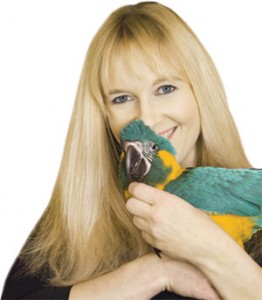training with positive reinforcement
My Thoughts On Positive Reinforcement Vs Dominance In Training
NOTE: I have a new pet behavior blog located at http://www.SoMuchPETential.com/blog. Thanks!
(This is a past Hyde Park Living column.)
People I meet around town are always surprised when I have negative reaction to Caesar Millan. And, it is that surprise that is the very reason why I want to share another view…one on the power of positive reinforcement and the importance of understanding behavior.
To those who believe it is important to be the alpha dog or pack leader, to assert your dominance, I’ve got to ask. How  does it help to foster a love of learning in your pet?
does it help to foster a love of learning in your pet?
One of Ceasar’s strategies for dealing with unwanted behaviors such as fear or aggression (or fear induced aggression) is a technique called flooding. Let me explain. Flooding is a form of training in which the animal is exposed to an aversive stimulus with no possibility of escape until the stimulus no longer arouses anxiety or fear. But can you imagine the level of anxiety and discomfort it causes the animal in the process? It is either sink or swim basically.
Here is an example of how I have seen Caesar work with a dog that exhibits strong aggressive tendencies to children on the street (this would be described as showing his teeth, snarling, having a tense body, and even biting if given the opportunity). He brought the dog on a leash to the sidewalk and had children ride their scooter past the dog, holding it down while the dog struggled and struggled until finally the dog stopped tensing up.
Television viewers saw it as the dog who learned to be submissive and calm. I cringed. Animal behaviorists have another word for it…learned helplessness. Learned helplessness occurs when an animal is repeatedly subjected to an aversive stimulus that it cannot escape. Eventually, the animal will stop trying to avoid the stimulus and behave as if it is utterly helpless to change the situation. Even when opportunities to escape are presented, this learned helplessness will prevent any action.
An example of learned helplessness that you may be able to relate to is Jaycee Dugard, who stopped trying to escape her kidnapper, abuser and father to her children after she realized it would do her no good to try. Yes, she learned how to be calm but what an extreme price to pay for it.
Think about yourself. If you were terrified of tarantulas and someone thought the best way to get you over your fear was to tie you down and cover you with the spiders until you finally quit squirming…how would that make you feel about overcoming fears? How would you feel about the person who wanted to do that to you? Do you think you would be more apt or less apt to be able to cope with other fear inducing situations in the future because of it? Speaking for myself, I can tell you I would probably never forget the feeling of total fear that that person subjected me to.
Systematic desensitization is a much more humane, more positive approach to not just overcoming fear, but also to teaching the animal to re-associate the fear-eliciting stimulus into a feel-good eliciting stimulus. (This process is called counter conditioning.) With systematic desensitization, you gradually expose the animal to what is scary to it and the criteria for advancing to the next step is your watching his calm behavior and only moving forward at a pace that does not elicit even the mildest of fear responses. The beauty of this is that the animal is always in total control. And I don’t know about you but I like knowing I have the power to control my situation.
Dog Training – Teaching Your Dog ‘Drop’
NOTE: I have a new pet behavior blog located at http://www.SoMuchPETential.com/blog. Thanks!
‘Drop it’ is such an important behavior to teach your dog for so many reasons. Below are two strategies for teaching it by trainers who use positive reinforcement. Both approaches will get you to the end result of your dog dropping something.
Barbara Heidenrich
 I know Barbara through the International Association of Avian Trainers and Educators (IAATE), have been fortunate to have taken several of her workshops, and have written several articles for her Good Bird Magazine in the past. Barbara is an internationally renowned trainer whose experience inludes consulting in zoos and other animal related facilities around the globe. She has been a part of the development and production of more than 15 different free flight education programs and has worked with 20 different animal facilities. You can learn more about her at her website.
I know Barbara through the International Association of Avian Trainers and Educators (IAATE), have been fortunate to have taken several of her workshops, and have written several articles for her Good Bird Magazine in the past. Barbara is an internationally renowned trainer whose experience inludes consulting in zoos and other animal related facilities around the globe. She has been a part of the development and production of more than 15 different free flight education programs and has worked with 20 different animal facilities. You can learn more about her at her website.
Below is an excerpt from one of her past Good Bird Magazine issues:
Puppies are notorious for chewing up all sorts of contraband. Despite my best efforts to keep all items I did not want chewed up from the floor, I knew there would be moments when my favorite shoes might end up in my puppy’s mouth. I decided to teach a strong ‘drop’ behavior.
To do this, I armed myself with Waylon’s absolute favorite treats hidden in my fist. I offered Waylon an acceptable chew toy such as a stuffed animal. As he was chewing, I place my closed fist full of treats next to the toy, when he would stop chewing and smell my closed fist, I bridged (said the word ‘good’) and opened my fist so that he could get a treat. This was repeated several times, until the presentation of my fist would quickly cause him to drop what was in his mouth. I then added a verbal cue as well. I chose the oh, so clever, word ‘drop’.
My next step was to raise the bar a bit. I offered Waylon something he enjoys more than a stuffed toy, his squeaky ball. This was followed by even more enticing items, including a bone. Every time Waylon dropped the item he received a treat, or in some cases I simply offered back the item he had dropped, or another fun chewable item. When the day came when he found a shoe, I walked up to Waylon as I would under any circumstances. This meant no chasing, yelling or shrieks that my shoe was in his mouth. I calmly gave him the drop cue and the shoe left his mouth unscathed and hit the floor. I also did not have a treat in my hand, which was not a problem. My goal had always been that the treat would be phased out from being hidden in the hand. This time I gave him lots of praise and attention, which worked fine as a reinforcer. Now I regularly reinforce with all sorts of things…a treat, giving back the item he dropped, attention, another acceptable chew toy, etc. I so enjoy that he will drop even the smallest item when cued. And he does it eagerly knowing something else he enjoys is sure to follow.
Domesticated Manners
Below is a video by London, England based Domesticated Manners.
Note the video has a disclaimer: I would suggest that you do not use this with dogs who are “protective” over their food or other resources but work with a qualified behaviourist / trainer who may use a similar exercise if they see it to be beneficial and/or appropriate in your particular case.
Dog Training – Counter Conditioning To Overcome Fear
NOTE: I have a new pet behavior blog located at http://www.SoMuchPETential.com/blog. Thanks!
It was the Fourth of July and everyone likes a good fireworks show on the Fourth of July, right? Wrong!
Not Sam, my parents’ dearly beloved four legged companion who loves playing outside ready to greet every passerby with a tail wag. Sam has even learned to ask to go out by ringing a bell or running to find my mom or dad, nudging them and running toward the door. It happens pretty often…but stopped briefly after my parents’ neighbors thought it be fun to have their own fireworks  show on the holiday. At least it stopped at nightfall.
show on the holiday. At least it stopped at nightfall.
Suddenly being outside in the dark became a trigger for panic (rapid heart rate, tense muscles, running away). No matter what my dad tried, he couldn’t get Sam out the door willingly as soon as darkness descended. And, if he could get Sam outside by pulling Sam on a leash, the little guy would run charging back to the door. By day two, my parents let Sam stay in at night (he’s young and luckily can hold things until morning) until I could come over and work with him.
What did I do? I put my education to the test by using the most positive, least intrusive strategies I know to re-teach Sam that being outside after dark can be pretty darned fun. And in one night, that’s what he learned.
I used what is called systematic desensitization, a process of gradually exposing Sam to the fear-eliciting stimulus (outside darkness) WITHOUT unexpected loud noise, in small, incremental steps. The criteria for advancing to the next step was watching his calm behavior and only moving forward at a pace that did not elicit even the mildest of his fear responses. The beauty of systematic desensitization is that Sam was always in total control. His body language dictated whether we moved forward or stepped backward. And I don’t know about you but I like knowing I have the power to control my situation.
Here’s what I did. Starting far enough from the door where he was calm with his tail wagging, I gave him a treat, petted him and was silly with him. We slowly moved toward the door. If I noticed any sign of escape behavior, we backed up to where he was comfortable again. Then we started over. In the first session, we got to within about five feet from the door. We stopped and came back to it a half hour later.
By the next session Sam stood at my side as I touched the door, then opened it slightly without his showing any sign of tensed muscles or looking like he was going to run away. Fifteen minutes later we tried again and this time he touched his front feet outside the door before he backed up. That was time to stop for a half hour and start again. The next time we started with him at the door. He walked all the way through the doorway and I held it open so that he knew he could run the other way if he chose to. The choice was always within his power of his own body language. However, once he was outside, I raised the bar by grabbing a squeaky toy.
Suddenly all he could think about was playing. We got down the steps and I took off running. He charged after me and the thought of running to the door was furthest in his mind.
Sam had just re associated being outside in the dark with play because he had the power to decide when ‘he’ was ready to move to the next step and because I paired being outside with some of his favorite activities. That’d be eating, playing and getting attention. In scientific terms, that re association is counter counditioning a fear eliciting stimulus into a feel-good eliciting stimulus. Systematic desensitization on steroids my teacher likes to say. In other words, I drained darkness as an elicitor of rapid heart rate, tense muscles and running away and helped counter condition darkness into a predictor of good things for Sam.
And hey, I’m all for good things!














